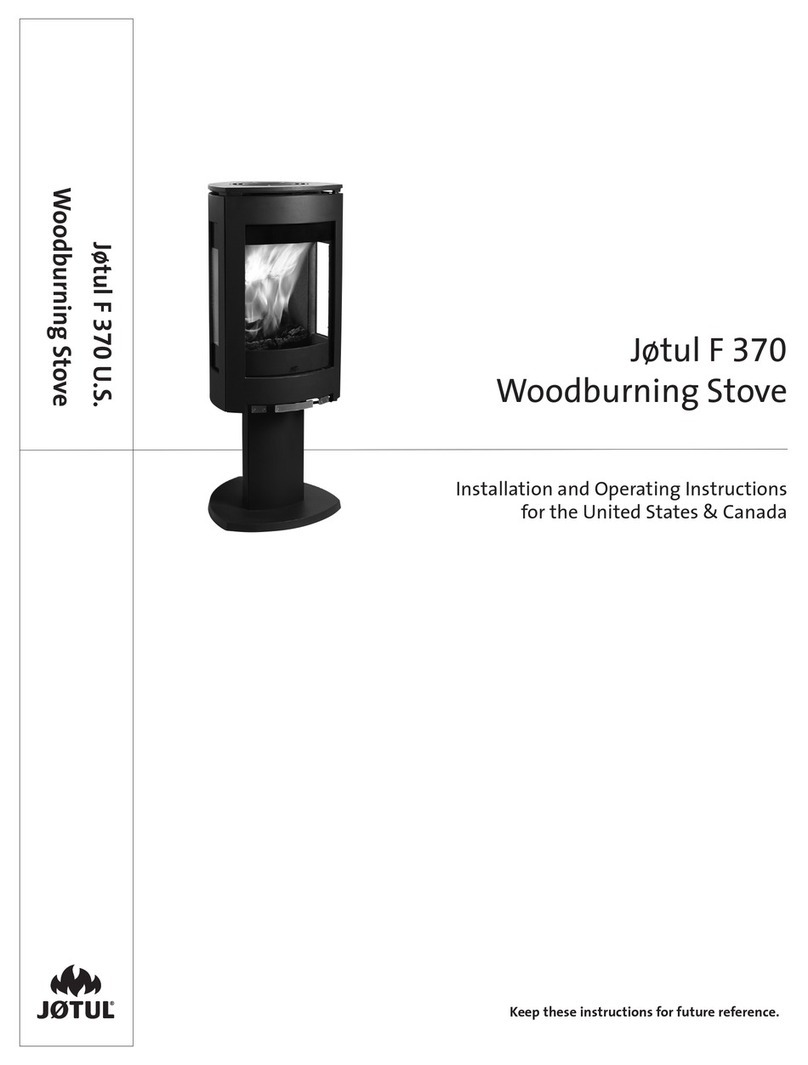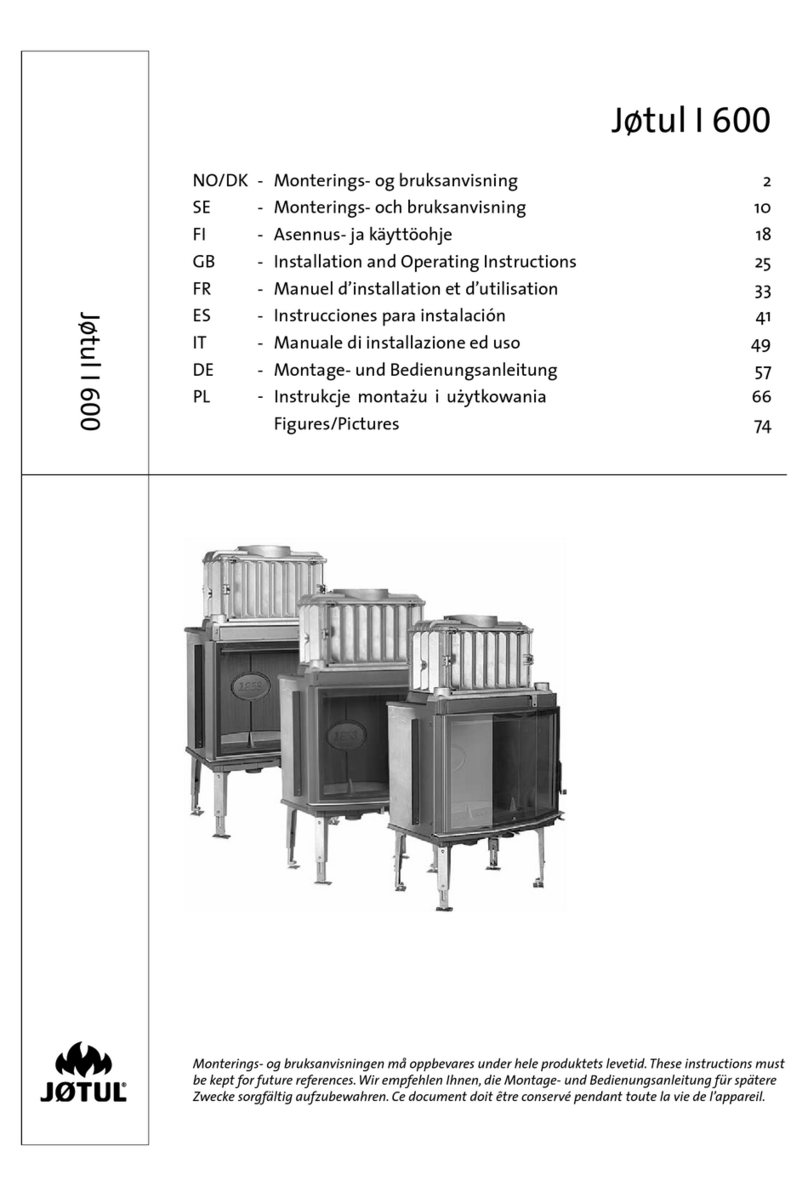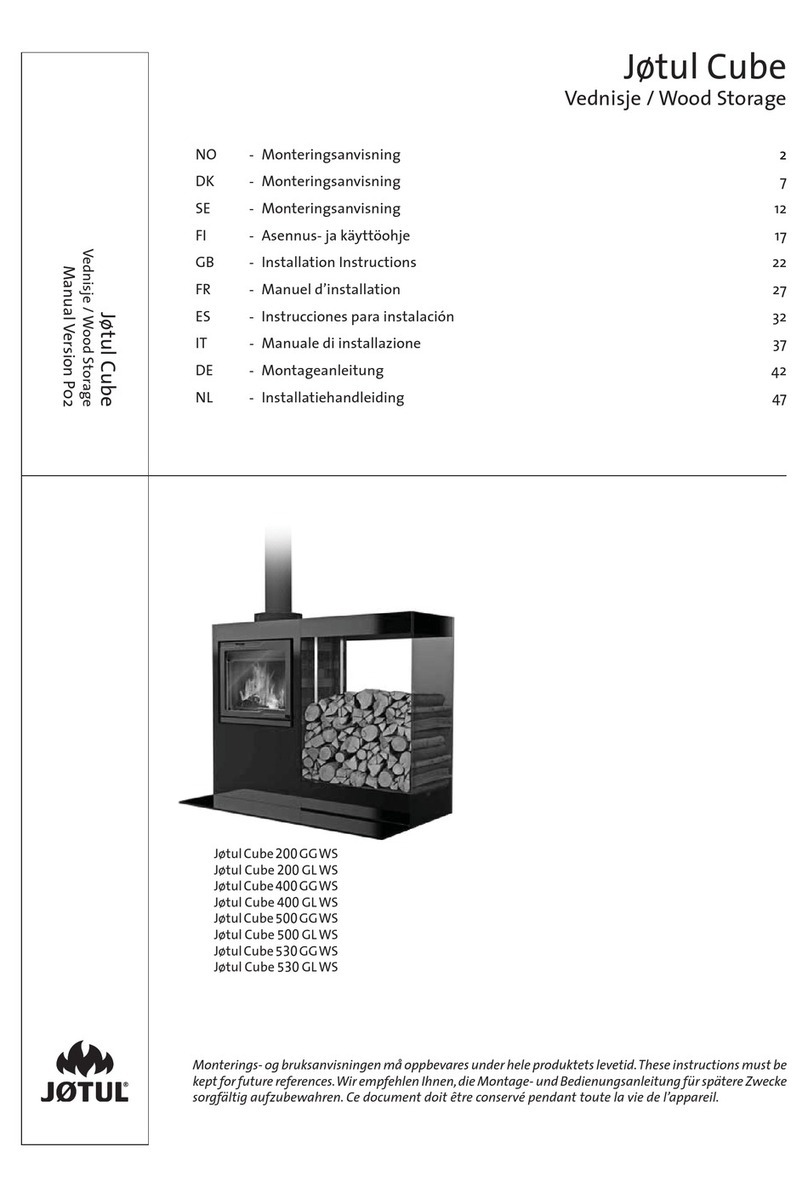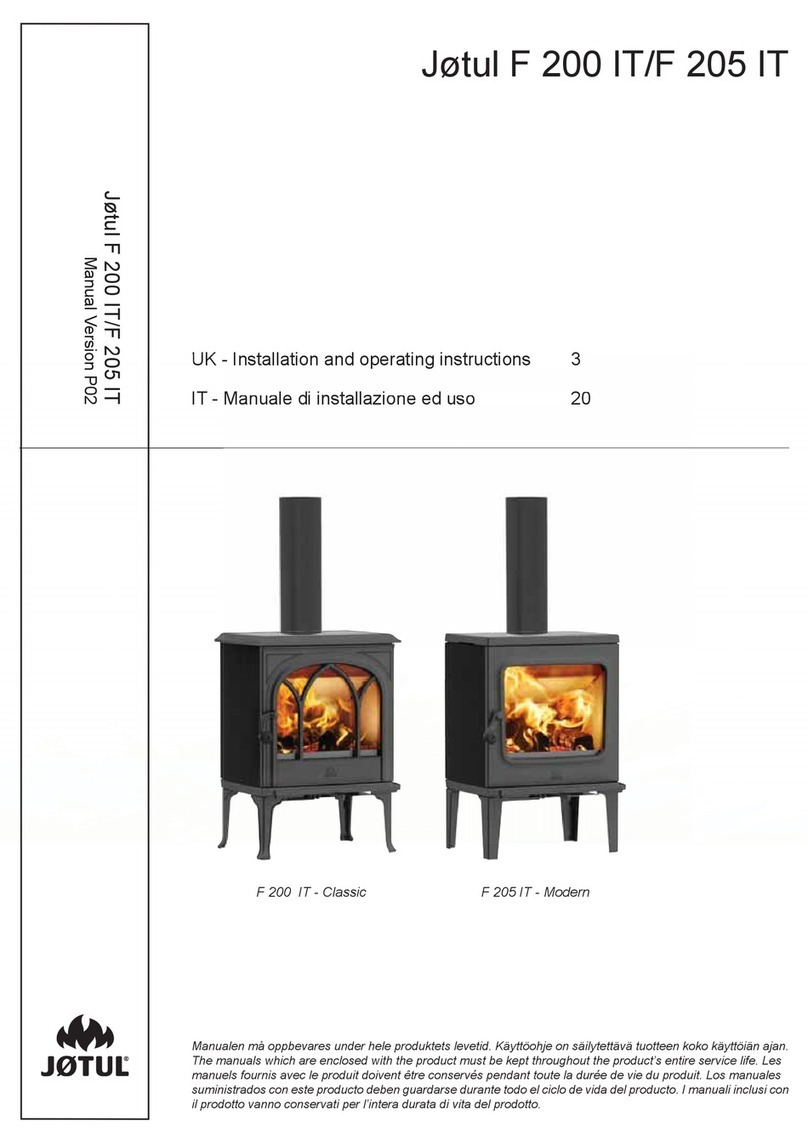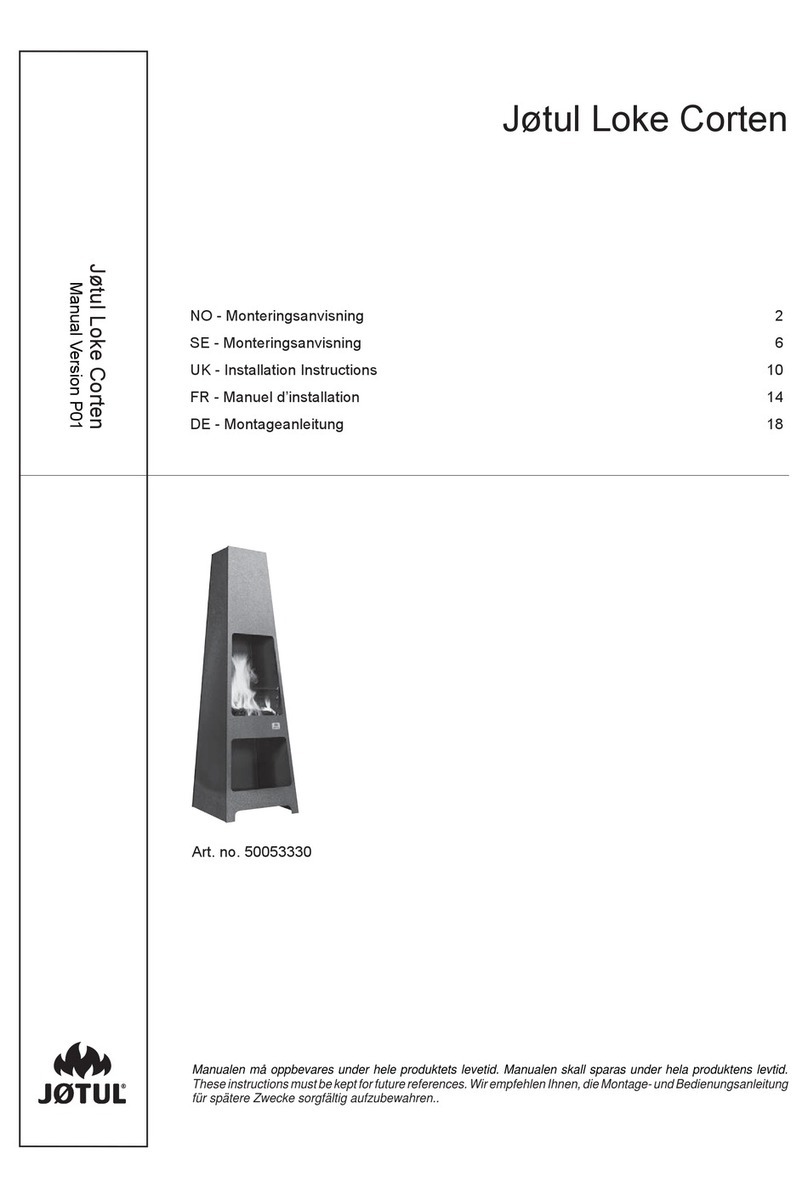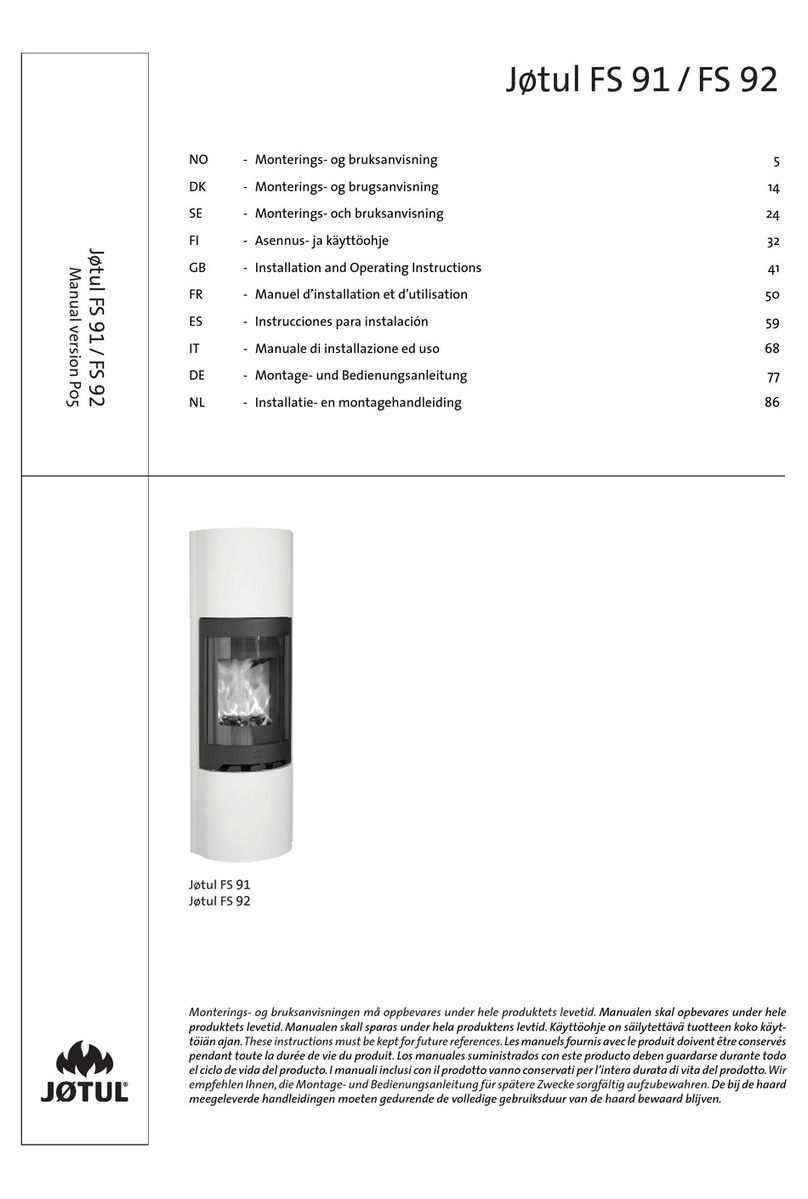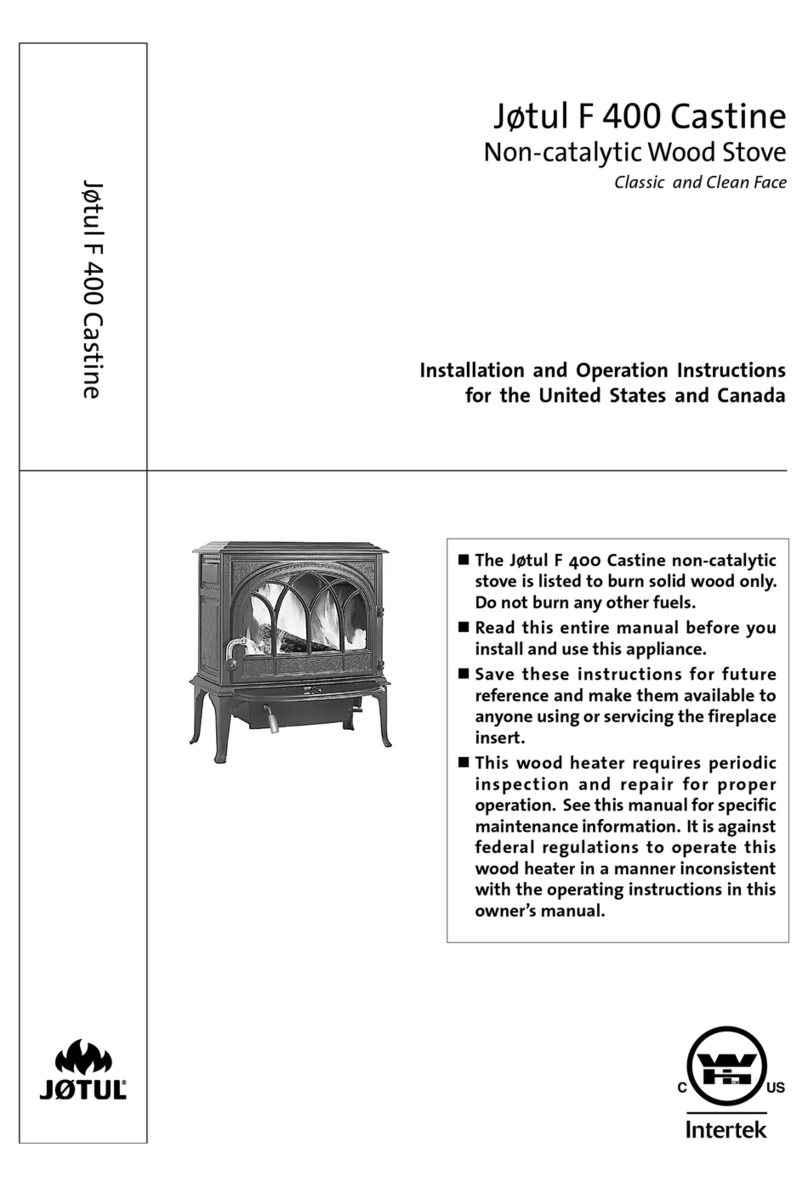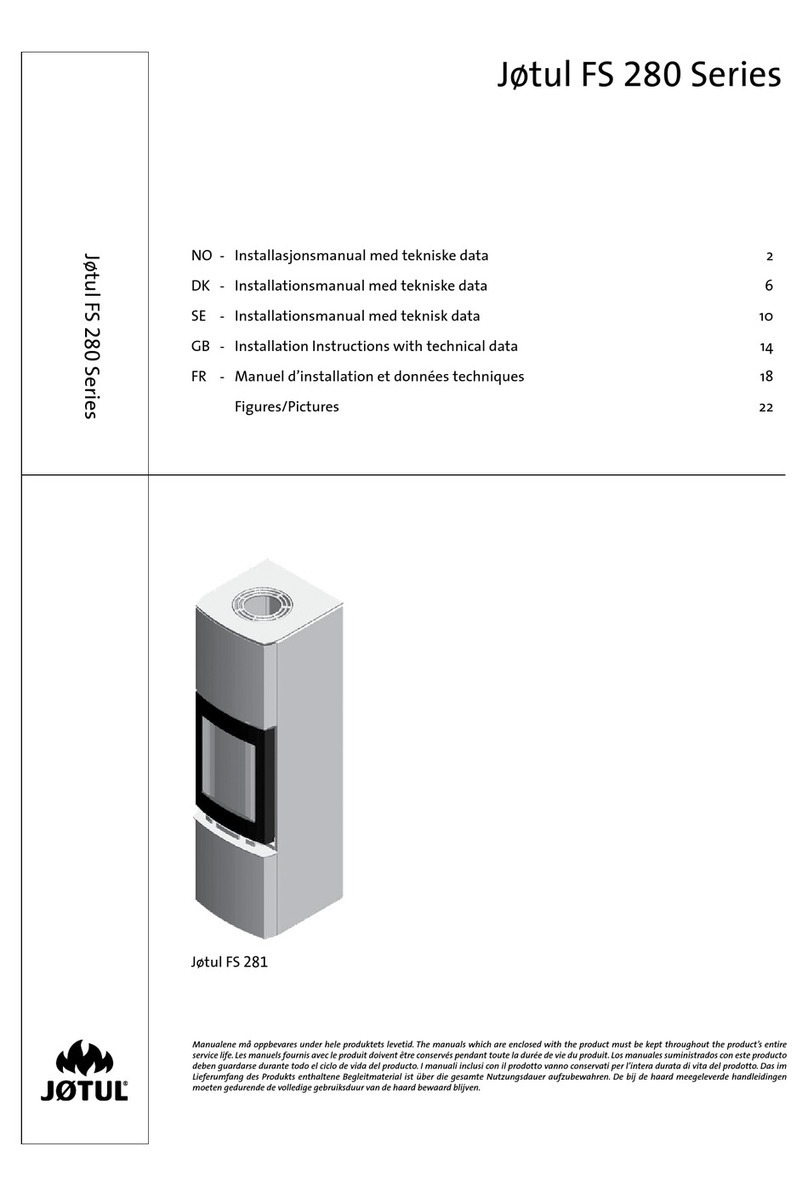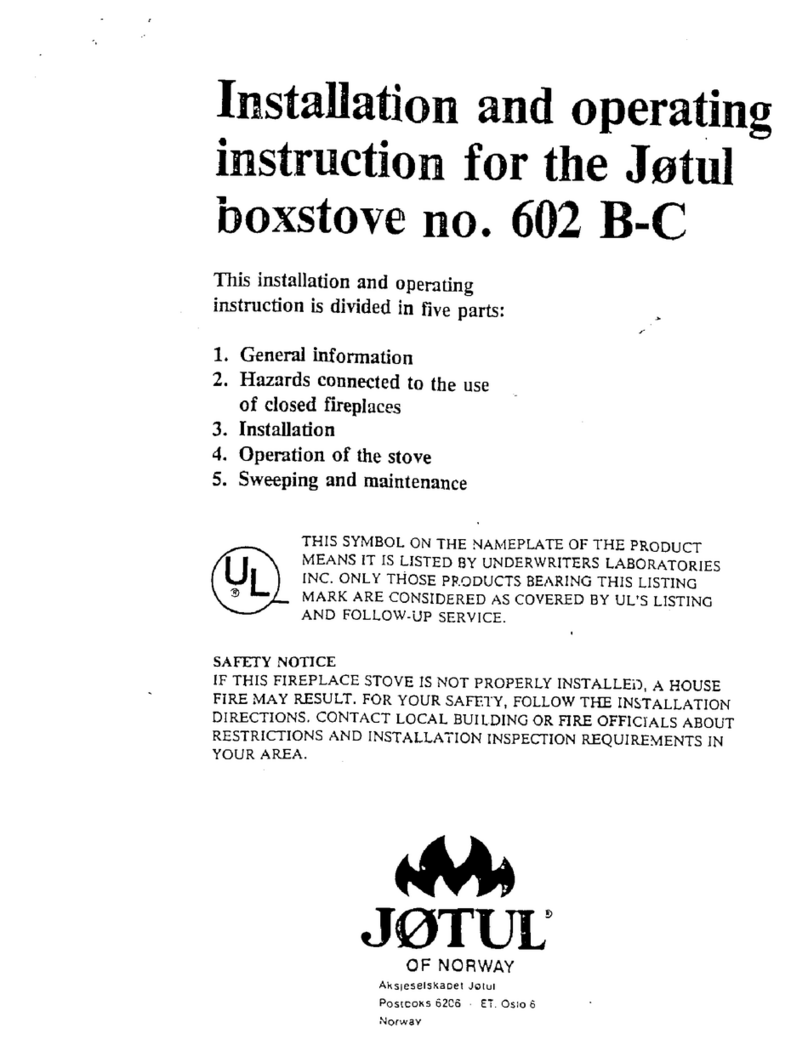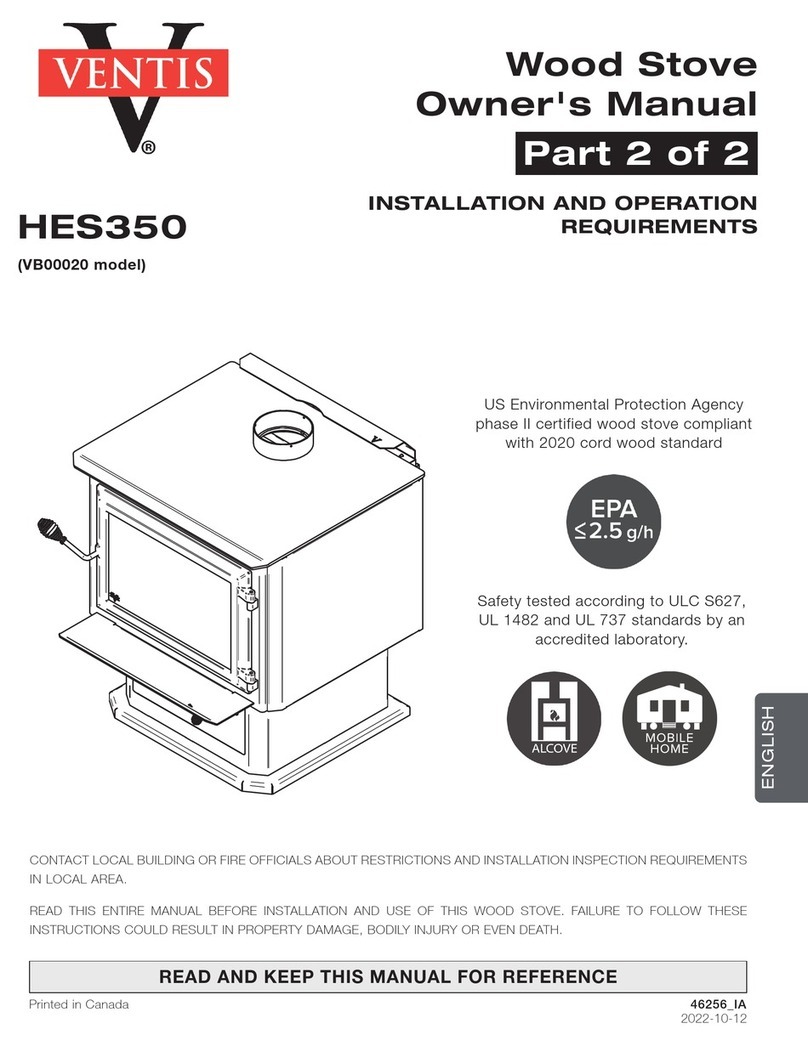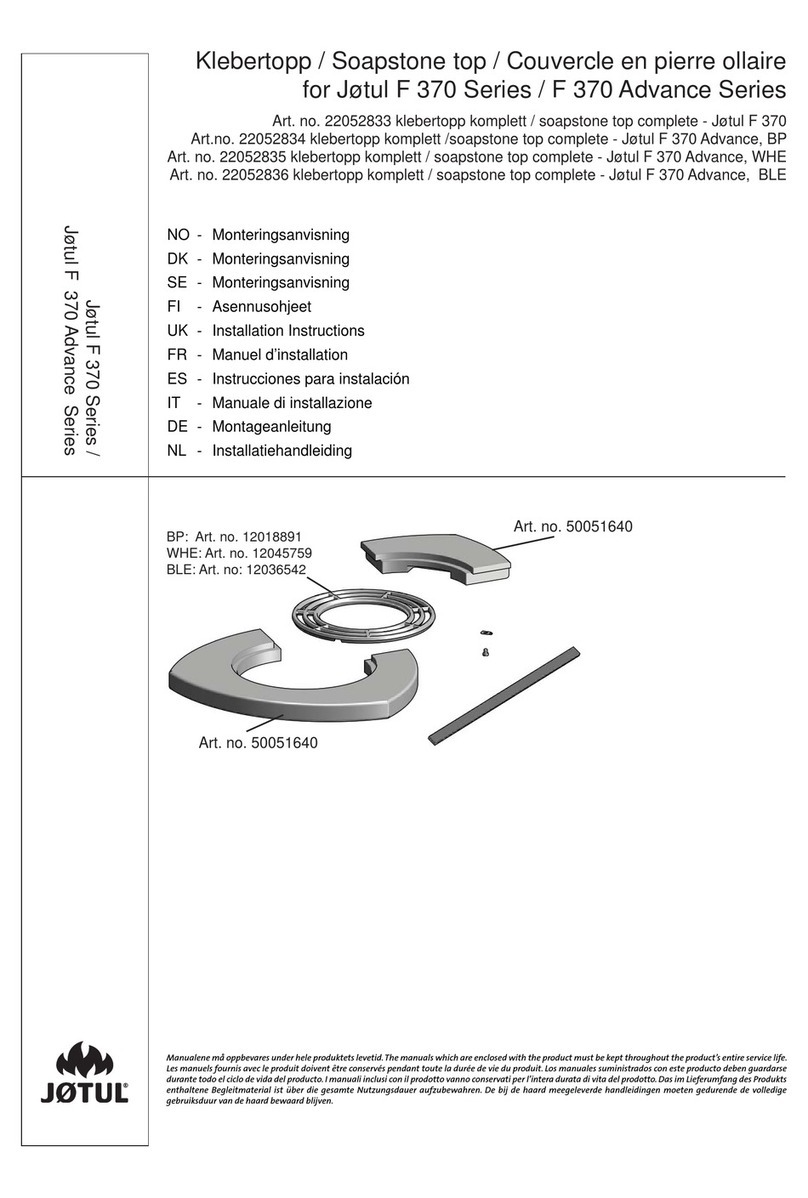
7
139681_R06 F 500 Oslo 1/20
those that are visible and also include materials that are behind
non-combustible materials.
If you are not sure of the combustible nature of a material, consult
your local fire officials. Contact your local building officials about
restrictions and installation requirements in your area.
Remember: “Fire Resistant” materials are considered combustible;
they are difficult to ignite, but will burn. Also “Fire-rated” sheet
rock is also considered combustible.
Using Shields to Reduce Clearances
Pipe shields: When using listed pipe shields to reduce the connector
clearance to combustibles, it must start 1”(25,4mm) above the
lowest exposed point of the connect pipe and extend vertically
a minimum of 25” (635mm) above the top surface of the stove.
Double wall pipe: Listed double wall pipe is an acceptable
alternative to connector pipe heatshields.
Wall-Mounted Protection: When reducing clearances through the
use of wall mounted protection:
In the U.S. refer to NFPA 211, Standard for Chimneys, Fireplaces,
Vents and Solid Fuel Burning Appliances, for acceptable materials,
proper sizing and construction guidelines.
In Canada, refer to CAN/CSA-B365, Installation Code for Solid-Fuel
Burning Appliances and Equipment, also for acceptable materials,
proper sizing and construction guidelines.
Rear Heatshield: A stove rear heatshield has been specifically
designed for the Jøtul F 500.
Rear heatshield part # 154332.
No other heat shield may be used.
See pages 17-18 for complete clearance requirements and
diagrams.
Notice
Accessories for wood stoves for clearance reduction have been
developed by many manufacturers. If not following the methods
of the installation codes, be sure that any accessory you choose
has been tested by an independent laboratory and carries the
laboratory’s testing mark. Follow all of the manufacturer’s
instructions.
Always contact your local building inspector or fire officials
about restriction and requirements in your area. Your local
officials have final authority for installation approval.
4.3 Alcove Installation
The Jøtul F 500 can be installed in an alcove situation provided:
See figures 9 and 10.
1. The stove must be installed with listed double walled pipe.
2. In a protected alcove installation both side walls and rear wall
must be protected per NFPA 211 or CAN/CSA-B365. The wall
protection must be elevated 1”(24,5mm) from the floor and
at least 1” (24,5mm)off the combustible wall to allow for an
air-flow.
3. The height of the wall protection including the bottom air
space must be 48”(1219mm).
4. The bottom heatshield is required in all Alcove installations.
See page 15 for installation instructions.
5. Hearth protection material must consist of:
a) a UL/ULC listed Type II Thermal Floor Protector or,
b) material having a minimum r value of 1.6 (see appendix a).
6. Minimum ceiling height in an unprotected installation, off the
top of the stove is 41”(1041 mm). The minimum ceiling height
off the top of the stove in a protected ceiling installation is
15”(380mm).
Use of the left side load door is prohibited in alcove installations.
Install 155840 Side Door Lock kit available from your dealer.
4.5 Mobile Home Installations
The Jøtul F 500 has been approved for use in mobile homes in the
U.S. and Canada, provided:
1. The stove is secured to the floor or the mobile home. Floor
mounting kit #750304. The structural integrity of the mobile
home must be maintained.
2. All chimney components, including chimney sections, supports,
spark arrestor, etc., shall comply with the Standard for Factory-
built Chimneys for Residential Type and Building Heating
Appliances, UL 103 and/or CAN/ULC-S629 Standard for 650°C
Factory-built Chimneys.
3. The chimney shall be attached directly to the stove and extend
at least 3 ft. (0.9m) above the roof. Termination must be at
least 2 ft. (0.6m) above the hightest elevation of any part of
the mobile home within 10 ft. (3m).
4. In order to allow for transportation of the mobile home, the
chimney termination shall be readily removed at or below an
elevation of 13.5 ft. (4.1 m) above ground level and reinstalled
without use of special tools or instructions.
5. A spark arrester must be installed at the termination. The net
free area of the arrester above the chimney outlet must not
be less than four times the net area of the chimney outlet,
and the vertical height of the arrester must not be less than
one-half the diameter of the chimney flue. Openings shall not
permit the passage of a sphere having a diameter larger than
1/2” (12.7 mm), and shall permit the passage of a sphere having
a diameter of 3/8” (9.6 mm).
6. Direct connection of the stove to an outside air source is
required. Use Outside Air Kit 154333. Do not substitute any other
connection method or device. See page 11 for more details. Duct
termination must not be installed at a level that is higher than
the air inlet located at the bottom of the stove.
7. When the chimney exits the mobile home at a location
other than through the roof, and exits at a point 7 ft. (2.1 m)
or less above the ground level, a guard or other method of
enclosing the chimney, must be provided at the point of
exit for a height up to 7 ft. Openings of this chimney guard
shall not permit penetration of a 3/4 in. (19.1 mm) diameter
rod, or contact with the chimney by a 1/2 inch (12.7 mm)
diameter rod inserted through the opening a distance of
4 inches (102 mm).
DO NOT INSTALL THE STOVE IN A BEDROOM OR SLEEPING AREA.
Always consult your local building inspector or fire officials
about restrictions and requirements in your area prior to
installing the stove.




